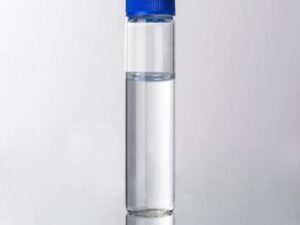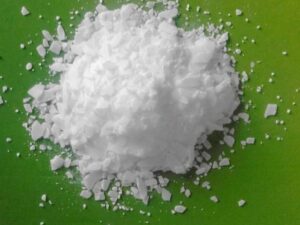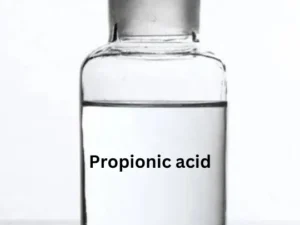Description
Maleic Anhydride: A Versatile Building Block in the Chemical World
Maleic anhydride (MA), a colorless or white solid with a pungent odor, is a highly versatile chemical intermediate used in the production of a wide range of products, from plastics and resins to pharmaceuticals and food additives. Its unique chemical structure and reactivity make it a valuable building block in numerous industrial processes.
What is Maleic Anhydride?
Maleic anhydride is an organic compound with the formula C₄H₂O₃. It’s the anhydride of maleic acid, meaning it’s formed by removing water from maleic acid. Commercially, MA is primarily produced by the vapor-phase oxidation of benzene or n-butane.
Key Applications of Maleic Anhydride:
The versatility of maleic anhydride stems from its reactive double bond and its ability to participate in various chemical reactions like Diels-Alder reactions, esterifications, and aminations. This reactivity allows it to be incorporated into diverse products, including:
- Unsaturated Polyester Resins (UPR): This is, by far, the largest application of MA, consuming a significant portion of global production. UPRs are used in manufacturing fiberglass-reinforced plastics, widely employed in boat hulls, automotive parts, construction materials, and tanks. Maleic anhydride provides reactivity and imparts toughness to the resin.
- Alkyd Resins: These resins are used in paints, coatings, and varnishes to provide durability, flexibility, and gloss. MA contributes to the air-drying properties and improves the overall performance of alkyd resin-based coatings.
- Lubricant Additives: MA derivatives are crucial in the production of lubricant additives. They enhance the performance of lubricants by providing properties such as viscosity index improvement, dispersancy, and oxidation inhibition, extending the life and efficiency of engines and machinery.
- Fumaric and Malic Acids: Maleic anhydride is a precursor to fumaric and malic acids, both of which are widely used in the food and beverage industry. Fumaric acid is used as a food acidulant in beverages and baked goods, while malic acid provides a tart taste to fruit products and beverages.
- Pharmaceuticals: MA derivatives are utilized in the synthesis of various pharmaceutical products, contributing to the development of medicines for treating various ailments.
- Agricultural Chemicals: Maleic anhydride is used as an intermediate in the production of herbicides and plant growth regulators, playing a role in modern agricultural practices.
- Copolymers: MA is used in the production of copolymers, enhancing the properties of various plastics and materials. For example, it can be copolymerized with styrene to improve the heat resistance of polystyrene.
Production and Handling:
The production of maleic anhydride typically involves the vapor-phase oxidation of benzene or n-butane over a catalyst. The process is carefully controlled to optimize yield and minimize byproduct formation. After production, MA is often purified by distillation or other separation techniques.
Due to its irritant properties, maleic anhydride requires careful handling and storage. Safety precautions, including wearing appropriate personal protective equipment (PPE) such as gloves, respirators, and eye protection, are essential to minimize exposure risks.
Environmental Considerations:
The environmental impact of maleic anhydride production is a growing area of concern. Efforts are being made to improve the efficiency of production processes and reduce emissions of volatile organic compounds (VOCs). Research is also focused on developing alternative, more environmentally friendly raw materials for MA production, such as bio-based feedstocks.
The Future of Maleic Anhydride:
The demand for maleic anhydride is expected to continue to grow, driven by its diverse applications and the increasing need for high-performance materials across various industries. Ongoing research and development efforts are focused on improving production efficiency, developing novel applications, and exploring sustainable alternatives to traditional production methods. As industries prioritize sustainability and innovation, maleic anhydride will continue to play a critical role as a versatile and essential chemical intermediate.
In conclusion, maleic anhydride is a vital chemical building block with a wide array of applications. Its unique properties and reactivity make it indispensable in the production of numerous products that contribute to various sectors, from construction and automotive to food and pharmaceuticals. As technology advances and sustainability becomes increasingly important, the future of maleic anhydride will likely be shaped by ongoing research and development efforts to improve its production, explore new applications, and minimize its environmental impact.





















Reviews
There are no reviews yet.